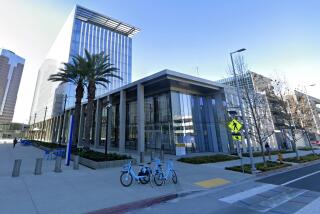But About Your Gas Bill . . . : Cold Spell Is a Lot of Hot Air If You’re Into Records
- Share via
With a month of cold, but not record-breaking temperatures, behind them, Southlanders should brace themselves now for the appearance of higher gas bills in their mail boxes in the month to come, according to the Southern California Gas Co.
Consumers who use natural gas to heat their homes will soon feel the financial pinch, if they haven’t already, Rich Puz, press relations supervisor for the untility, said Monday.
What Southern California has been experiencing is the “first really cold winter since gas costs increased dramatically” a few years back, Puz said.
Southlanders are, he said, shivering through the coldest winter since the 1978-79 season when, before the federal deregulation of natural gas prices, the cost of the fuel was much lower. On Monday, there was some short-term good news from the National Weather Service, which predicted a gradual warming trend through the week with highs in the 60s and overnight lows ranging from the upper 30s in the inland valleys to the upper 40s along the coast.
But this morning’s early hours could be cold--really cold--with temperatures dipping down near 30 in outlying areas of the Los Angeles Basin and into the 20s in canyons below the mountains and at higher elevations.
There is some disagreement about just how cold it has been lately.
Although the gas company’s statisticians say it has been awfully cold, by Southern California standards, weather service personnel remain unimpressed by the figures they collect at the Los Angeles Civic Center, which, they admit, tend to be significantly warmer than temperatures garnered from outlying regions.
Puz said the gas company works in “degree-days”--a concept that merits a bit of explanation.
On any day that the mean daily temperature drops a degree below 65, the gas company has a “degree-day.” So if the mean daily temperature for today is 60, that is five “degree-days” right there.
In January, the utility racked up a total of 337 “degree-days,” compared to 196 in January, 1984.
In the eyes of the gas company, this January was 72% colder than last January. So far this winter, temperatures have been 49% cooler than a year ago, Puz added.
Try telling that to the weather service, though.
“It was cooler on some days in January, but the overall average was above normal,” insisted Frankie Shaw, a specialist at the weather service, which bases its analysis on Civic Center figures.
And it was just not that much colder downtown in January than usual, Shaw said. The average temperature for this January at the Civic Center was 57.5 degrees, she said. The normal figure for the last 30 years is 57.2.
So, according to the weather service, January was actually a bit warmer than usual.
“It sure did feel colder,” Shaw admitted. “But not one night in January was the low in the 30s (at the Civic Center); all of them were in the 40s and 50s.”
Now, if you heard a lot of talk about frost warnings advising farmers and backyard gardeners to take care, those were for outlying regions of Southern California and colder areas of the Los Angeles Basin.
“The San Fernando and San Gabriel valleys might have been colder than usual last month,” Shaw said. “The topography has a lot to do with it--cold pockets, freezing temperatures and winds below the canyons.”
But the official low temperatures for Los Angeles--as measured at the Civic Center--were not all that spectacular, she said.
Friday it was 38; Saturday, 43; Sunday, 39; and Monday, 44. None of them was a record low, she said.
The outlook for the rest of the week is a bit better, with the official weather service forecast calling for clear, cold weather and slightly higher temperatures.
Record-breaking or not, the last month or so of cold temperatures is expected to cost consumers plenty.
The gas company has a rule of thumb--the average household uses three to five times more gas on a cold day than it would normally, Puz said.
And that adds up in a real hurry.
Puz said that because of the way the state Public Utilities Commission structures the gas company’s rates--in an effort to encourage conservation--the amount you pay increases rapidly during a cold spell.
The PUC’s “lifeline” rate for Southern California Gas Co. customers is 45.5 cents per therm (a therm is 100,000 BTUs of gas).
“A typical residential customer isn’t going to go much beyond the lifeline allowance in a typical winter month,” Puz said. “But, beyond the lifeline level, gas is billed at 74.1 cents per therm, so a typical bill for a relatively small single-family house--for about 100 therms of gas--is normally $54. When it gets much colder, as it did last month, and you use 50% more gas, the bill goes up 69% because of the rate structure. The $54 bill becomes $91.10.”
It is then that gas company customers hit the ceiling, thinking that the meter was misread or that there was a leak somewhere, he said.
But usually there isn’t. It is simply that more gas for heating costs much more money.
More to Read
Sign up for Essential California
The most important California stories and recommendations in your inbox every morning.
You may occasionally receive promotional content from the Los Angeles Times.













